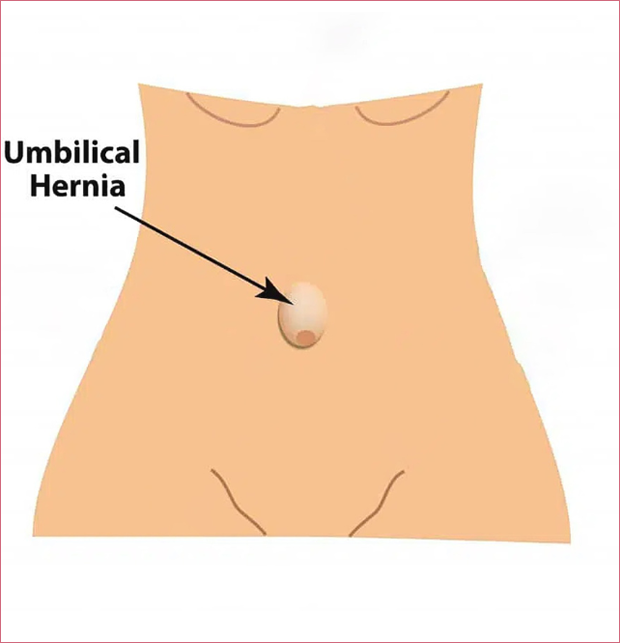
What is an Umbilical Hernia?
An umbilical hernia occurs when part of the intestine or abdominal tissue protrudes through the abdominal wall near the belly button (umbilicus). This type of hernia is more common in infants but can also affect adults, often causing a noticeable bulge in the area.
What Are the Symptoms of an Umbilical Hernia?
Common signs of an umbilical hernia include:
- A visible bulge or swelling near the belly button.
- Pain or discomfort around the navel, especially when coughing, lifting or bending.
- The bulge may become more noticeable when the person is standing, crying (in infants) or exerting pressure on the abdomen.
- In some cases, there may be no pain and the hernia may not cause symptoms.
If ignored, an umbilical hernia can lead to complications such as strangulation, requiring immediate medical attention.
Causes and Risk Factors of an Umbilical Hernia
Key factors that contribute to the development of an umbilical hernia include:
-
Congenital weakness:
Babies are born with a small opening in the abdominal muscles, which can lead to hernias -
Obesity:
: Increased abdominal pressure due to excess weight can cause or worsen an umbilical hernia. -
Chronic coughing or constipation:
These can put additional pressure on the abdominal wall. -
Previous abdominal surgery:
Surgical scars can weaken the abdominal wall, making it more prone to hernias. -
PFamily history:
A genetic predisposition can increase the risk of developing an umbilical hernia.
Treatment Options for Umbilical Hernia
1. Non-Surgical Management
In some cases, particularly with small, painless hernias, monitoring may be sufficient, especially for infants, as they can sometimes close on their own as the child grows. However, surgery is often required for larger or symptomatic hernias.
2.Surgical Options
(a) Laparoscopic Hernia Repair:
- A minimally invasive procedure with small incisions.
- The hernia is repaired using a mesh to strengthen the area and prevent recurrence.
- Faster recovery and less scarring compared to traditional surgery.
(b) Open Hernia Repair:
- A traditional procedure using a larger incision
- Mesh placement is used to reinforce the abdominal wall.
- Recommended for larger or more complex cases.
Why Choose Laparoscopic Surgery for Umbilical Hernia?
-
Smaller incisions
with minimal scarring. -
Faster recovery
and quicker return to normal activities -
Reduced risk of complications
such as infection or hernia recurrence. -
Performed using advanced technology
for precise and accurate repair






